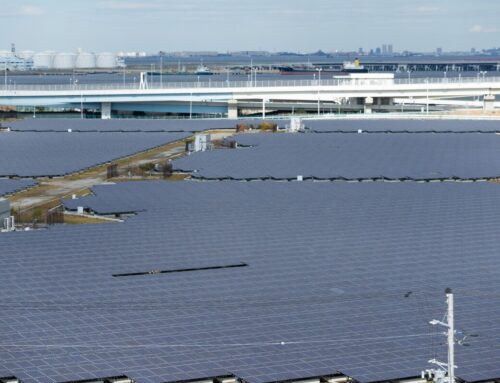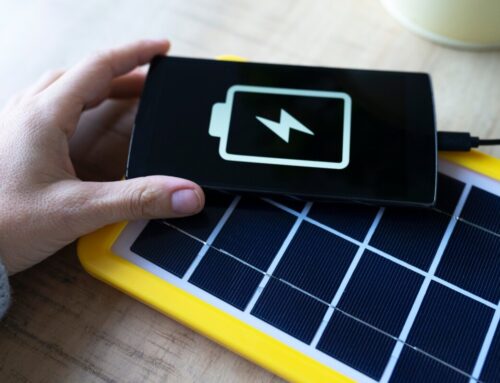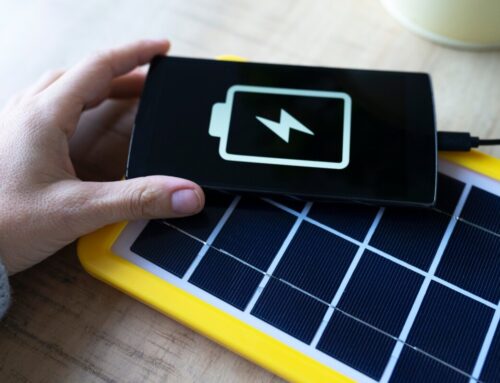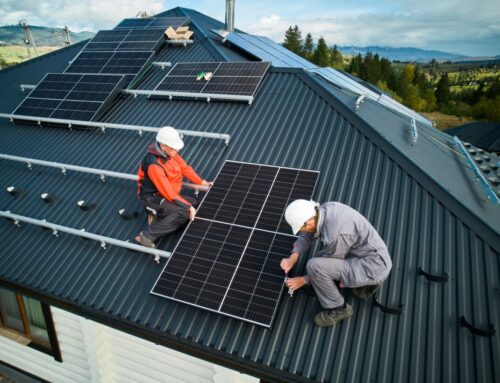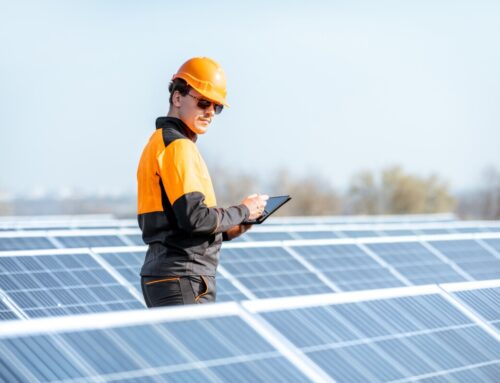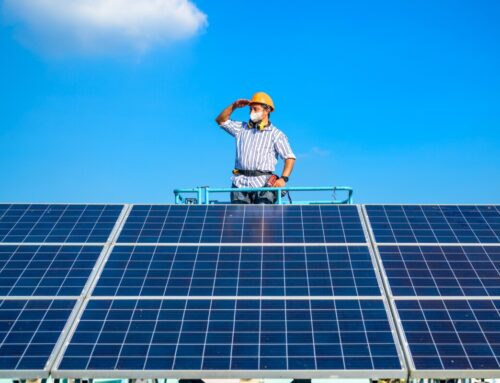Solar Panel Installation: Timeframe Explained
Understanding the Solar Panel Installation Timeline
Are you curious about how long it takes to install solar panels? You’re not alone. Many homeowners are eager to make the switch to solar energy but are unsure about the time commitment involved. The good news is that the process is often quicker than expected, promising a swift transition to sustainable energy. Let’s break down the timeline for you.
Initial Consultation and Site Assessment
The journey begins with an initial consultation and site assessment, which typically takes a few days to a week. During this phase, solar experts evaluate your roof’s condition, sun exposure, and energy needs. This step is crucial for designing a system tailored to your home.
Permitting and Approvals
Once the design is finalized, the next step involves obtaining necessary permits and approvals. This can take anywhere from two to eight weeks, depending on local regulations and the complexity of your project. Patience is key here, as this step ensures your installation meets all safety and legal standards.
Installation Day
The actual installation of solar panels is surprisingly quick, often completed in one to three days. A skilled team will mount the panels, connect the wiring, and set up the inverter. Before you know it, your home will be harnessing the power of the sun.
Final Inspection and Activation
After installation, a final inspection is conducted to ensure everything is up to code. This usually takes a few days. Once approved, your system is activated, and you can start enjoying the benefits of solar energy. In total, the entire process from start to finish can take anywhere from one to three months.
What Factors Influence Installation Time?
When considering how long does it take to install solar panels, it’s essential to understand that several factors can influence the timeline. While some installations may be completed in a day, others might take a few weeks. Let’s explore the key elements that affect this duration.
- Site Assessment and Preparation: Before installation begins, a thorough site assessment is necessary. This involves evaluating your roof’s condition, angle, and orientation. If your roof requires repairs or modifications, this can add time to the process.
- Permitting and Approvals: Securing the necessary permits and approvals from local authorities can vary significantly in duration. Some regions have streamlined processes, while others may take longer, impacting how long does it take to install solar panels.
Complexity of the Installation
The complexity of your solar panel system also plays a crucial role. Systems with additional features like battery storage or those installed on complex roof structures may require more time. Additionally, larger systems naturally take longer to install than smaller ones.
Availability of Installers
Finally, the availability of qualified installers in your area can affect the timeline. During peak seasons, demand for installations can be high, potentially leading to scheduling delays. To ensure a smooth process, it’s advisable to book your installation well in advance.
Step-by-Step: The Solar Panel Installation Process
1. Site Assessment and Design
The journey begins with a thorough site assessment, which typically takes one to two weeks. During this phase, a solar technician evaluates your roof’s condition, shading, and orientation to design a system tailored to your needs. This step is crucial for ensuring optimal energy production.
2. Permitting and Approvals
Next, your solar provider will handle the necessary permits and approvals, which can take anywhere from three to eight weeks. This timeline varies depending on local regulations and utility company requirements. Patience is key here, as this step ensures your system meets all legal standards.
3. Installation Day
Once permits are secured, the actual installation of solar panels is surprisingly quick, often completed in one to three days. A team of professionals will mount the panels, connect the wiring, and set up the inverter. This phase is exciting as you see your solar dream come to life.
4. Inspection and Activation
After installation, a final inspection by local authorities is required, which can take a few days to a couple of weeks. Once approved, your system is activated, and you can start enjoying the benefits of solar energy. In total, the entire process from start to finish can take anywhere from one to three months, depending on various factors.
How Long Does It Take to Install Solar Panels on Different Roof Types?
Are you considering switching to solar energy but wondering, “How long does it take to install solar panels?” You’re not alone. Many homeowners are eager to harness the power of the sun but are unsure about the time commitment involved. Rest assured, with the right information, you can plan your solar installation efficiently.
Factors Influencing Installation Time
The time it takes to install solar panels can vary significantly based on several factors. Roof type is a primary consideration. For instance, installing panels on a flat roof is generally quicker than on a sloped roof due to easier access and fewer safety precautions. Roof material also plays a role; metal roofs might require additional mounting equipment, extending the installation time.
Typical Installation Timelines
- Flat Roofs: Typically, installation on flat roofs can be completed in 1-2 days due to straightforward access and fewer obstacles.
- Sloped Roofs: These installations might take 2-3 days, as they require more safety measures and specialized equipment.
- Complex Roofs: Roofs with multiple angles or obstructions can take up to a week, as they demand customized solutions and careful planning.
Understanding these timelines can help you better prepare for your solar panel installation. By considering your roof type and working with experienced installers, you can ensure a smooth transition to solar energy.
Seasonal Considerations: Does Time of Year Affect Installation?
Weather Conditions
- Winter Challenges: Cold temperatures and snow can delay installation due to safety concerns and limited daylight.
- Summer Advantages: Longer days and generally dry weather can speed up the process, making summer an ideal time for installation.
Demand Fluctuations
- Spring Surge: As homeowners prepare for summer, demand for solar installations often spikes in spring, potentially leading to scheduling delays.
- Off-Peak Opportunities: Fall and winter might offer more flexible scheduling options as demand decreases.
By considering these seasonal factors, you can better estimate how long it takes to install solar panels and choose a time that aligns with your schedule and weather conditions. This proactive approach ensures a smoother installation experience, maximizing both time and energy efficiency.

Curious about solar? Let us help you discover how solar energy can revolutionize your home and save you money. Request Your Free Solar Estimate at SOLAR ENERGY
How Long Does It Take to Install Solar Panels for Residential vs. Commercial Properties?
Are you considering switching to solar energy but wondering, “How long does it take to install solar panels?” You’re not alone. Many homeowners and business owners are curious about the timeline for this eco-friendly upgrade. The good news is that the installation process is often quicker than expected, allowing you to start saving on energy costs sooner.
Residential Solar Panel Installation
For residential properties, the installation of solar panels typically takes about 1 to 3 days. This timeline can vary based on the size of the system and the complexity of the roof. Key factors influencing the timeline include:
- System Size: Larger systems may require more time.
- Roof Type: Complex roof designs can extend installation time.
- Permits and Inspections: These can add a few days to the overall process.
Commercial Solar Panel Installation
Commercial installations are generally more complex and can take anywhere from 1 week to several weeks. This is due to the larger scale and additional considerations such as structural assessments and electrical upgrades.
Factors affecting commercial installation include:
- Project Scale: Larger projects naturally take longer.
- Building Structure: Older buildings may need additional work.
- Regulatory Approvals: More extensive permits and inspections are often required.
In conclusion, whether you’re installing solar panels for a home or a business, understanding the timeline helps in planning and managing expectations. By knowing how long it takes to install solar panels, you can better prepare for the transition to sustainable energy.
Permits and Approvals: How They Impact Installation Duration
When considering how long it takes to install solar panels, one might think the process is as simple as setting them up on your roof. However, the timeline is significantly influenced by the permits and approvals required. This step, often overlooked, can be a major factor in the overall duration of the installation process. But don’t worry, understanding this can help you plan better and avoid unnecessary delays.
Understanding the Permit Process
Before installation can begin, you must secure the necessary permits from local authorities. This involves submitting detailed plans and specifications of your solar panel system. The approval process can vary greatly depending on your location, ranging from a few days to several weeks. Factors such as local regulations and the current workload of the permitting office can impact this timeline.
- Local Regulations: Each municipality has its own set of rules regarding solar panel installations.
- Workload of Permitting Office: High demand can slow down the approval process.
The Role of Utility Companies
In addition to local permits, approvals from utility companies are often required. They need to ensure that your solar panel system can be safely integrated into the existing grid. This step can add additional time to the process, as utility companies may have their own inspection and approval procedures.
- Grid Compatibility: Ensuring your system can safely connect to the grid.
- Inspection Procedures: Utility companies may conduct their own inspections before granting approval.
By understanding these steps and preparing accordingly, you can better estimate how long it takes to install solar panels and ensure a smoother installation process.
How Long Does It Take to Install Solar Panels: A Look at DIY vs. Professional Installation
Are you considering solar panels but wondering, “How long does it take to install solar panels?” You’re not alone. Many homeowners are eager to harness solar energy but are unsure about the time commitment involved. Whether you opt for a DIY approach or hire professionals, understanding the timeline can help you make an informed decision.
DIY Installation: A Time-Intensive Endeavor
Choosing to install solar panels yourself can be rewarding but time-consuming.
Key factors influencing the timeline include:
- Skill Level: If you’re handy and familiar with electrical systems, you might complete the installation in a few weekends.
- Permitting and Inspections: Navigating local regulations and obtaining necessary permits can add weeks to your timeline.
- Equipment and Tools: Ensuring you have the right tools and materials on hand can prevent delays.
Professional Installation: Quick and Efficient
Opting for professional installation typically speeds up the process.
Here’s what to expect:
- Initial Consultation: A site assessment and consultation can be scheduled within a week.
- Installation Time: Once permits are secured, professionals can install the system in 1-3 days.
- Post-Installation Checks: Final inspections and grid connection might take an additional week.
In conclusion, the question “How long does it take to install solar panels?” depends largely on your chosen method. While DIY offers flexibility, professional installation ensures efficiency and compliance, allowing you to start saving on energy costs sooner.
How Weather Conditions Can Affect Installation Time
When considering how long does it take to install solar panels, weather conditions play a crucial role. Imagine planning your solar panel installation only to have it delayed by unexpected rain or high winds. This can be frustrating, but understanding how weather impacts the process can help set realistic expectations and ensure a smoother installation experience.
Rain and Moisture
Rain can significantly delay the installation of solar panels. Installers need dry conditions to safely work with electrical components and secure panels to your roof. Even after the rain stops, surfaces may need time to dry, further extending the timeline. Therefore, it’s wise to plan installations during dry seasons whenever possible.
Wind and Storms
High winds and storms can halt installation efforts due to safety concerns. Installers must ensure that panels are securely fastened, which is challenging in windy conditions. Additionally, strong winds can damage equipment or even cause accidents, making it essential to wait for calmer weather.
Temperature Extremes
Extreme temperatures, whether hot or cold, can also affect how long it takes to install solar panels. In very hot weather, installers may need to take frequent breaks to avoid heat exhaustion, slowing down the process. Conversely, cold temperatures can make handling equipment more difficult, potentially leading to delays.
How SolarEnergy Can Help Streamline Your Solar Panel Installation
Are you considering making the switch to solar energy but wondering, how long does it take to install solar panels? You’re not alone. Many homeowners are eager to harness the power of the sun but are concerned about the time commitment involved. At SolarEnergy, we understand that time is of the essence, and we’re here to help you streamline the process, ensuring a smooth and efficient installation experience.
Understanding the Installation Timeline
- Initial Consultation: This is where it all begins. Our team will assess your energy needs and evaluate your property to design a custom solar solution. This step typically takes a few days to a week.
- Permitting and Approvals: Navigating the paperwork can be daunting, but we handle it for you. This phase can take anywhere from two to six weeks, depending on local regulations.
Efficient Installation Process
Once all the paperwork is in order, the actual installation of solar panels is surprisingly quick. Our experienced technicians can usually complete the installation in one to three days, depending on the system’s size and complexity. We coordinate every step to minimize disruption to your daily routine.
Post-Installation Support
After installation, we don’t just leave you to figure things out on your own. SolarEnergy provides comprehensive support, including system monitoring and maintenance tips, ensuring your solar panels operate at peak efficiency. With our help, you can enjoy the benefits of solar energy without the hassle.
FAQ
-
How long does a typical solar panel installation take?
Most residential solar installations take 1-3 days once permits are approved. -
What causes delays in solar installation?
Permitting, utility approval, and weather conditions can extend the timeline. -
How long does it take to get solar panel permits?
Depending on location, permits can take a few weeks to a few months. -
Can I speed up the solar installation process?
Choosing a reputable installer and ensuring paperwork is ready helps prevent delays. -
Does the size of my system affect installation time?
Yes, larger systems or battery additions may take longer to install.
Don’t wait to go solar! Thousands of homeowners are saving—join them and start reaping the benefits.
Book Your Free Consultation at SOLAR ENERGY
Explore additional solar solutions at NEW SOLAR QUOTES and discover how it can benefit your home!


